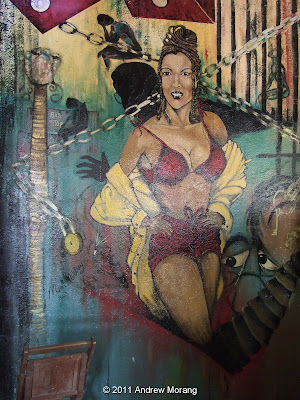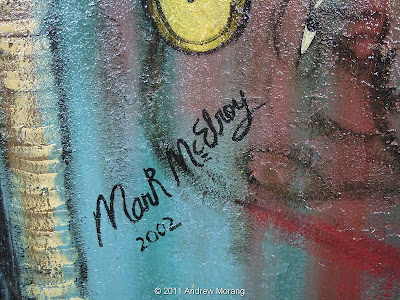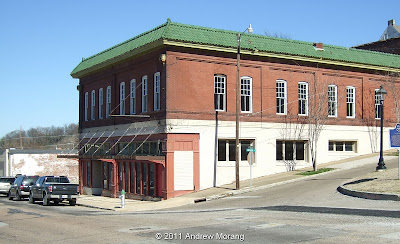
North Washington Street was once a busy commercial thoroughfare, but over the years, many of the warehouses and shops have been torn down. One of the few survivors is this 1911-vintage automobile showroom at 913 Washington Street. A
Vicksburg Post article (27 December 2010) states the building was originally used for wagon and carriage manufacture but was later a Packard showroom. I found a June, 1990, Kodachrome slide in my archives which still shows a Packard sign.

The Packard web site does not list McKay Motors but does list a dealer called Christian & Brough Company at 919 Washington Street.

Today, only the southern section of the building stands. The center unit was dismantled by the City of Vicksburg on February 1, 2007. The roof had deteriorated but several people have told me that the building was not in such dangerous condition that it could not have been saved. This section may have once housed a 7-Up bottling plant, which was in operation in the 1950s.

During the 1970s through the early-1980s, the building housed the Monte Carlo club, which booked nationally-known rhythm and blues bands. In the early 2000s, a club named Faces operated here for a short while. The owner put a lot of effort into fixing and decorating, but I am not sure why it closed. The good news is a local businessman, Mr. Malcolm Carson, has bought the building and is in the process of cleaning and renovating it.

The interior still has some of its original architectural decorative elements, like this beautiful support.


Among the remnants of the "Faces" era are piles of furniture and props and some spectacular murals painted on the walls. The one above is on the ground floor on the south side. The props (debris) include chairs, Victrolas, tables, and clocks.


Walk up the stairs to the second floor and you see another wide open space that could have numerous future uses. I was told that this may have once been the automobile repair shop, but I did not see evidence of lifts or hydraulic equipment, and possibly people are thinking of the building next door (the one that was dismantled).


More of these funky murals are on the second floor, the example above at the top of the stairs.


They were painted in 2002 by an artist named Mark McElroy, whose signature appears on the lower right of the mural of the robust lady.


I love the silhouette of the dancing couple, and the scowling lady glares down at the audience from near the ceiling.

There are even movie seats and a signboard amongst the debris.

What can be done with this building? A group of artists and historians may form a non-profit organization to preserve what remains of Margret's Grocery, which is deteriorating rapidly from the weather and vandals. Possibly 913 Washington Street could become a museum of Afro-American heritage. The location is perfect because Vicksburg already attracts tourists, and the Corps of Engineers' Lower Mississippi River Museum and Interpretive Site is right across the street. Maybe we finally have enough momentum to revive downtown.
(All interior images are from a FujiFilm F31fd compact digital camera. Photographs 1 and 2 are scans of Kodachrome 25 transparencies, taken with a Pentax Spotmatic camera and the 150 mm f/4 Super-Takumar lens.)








